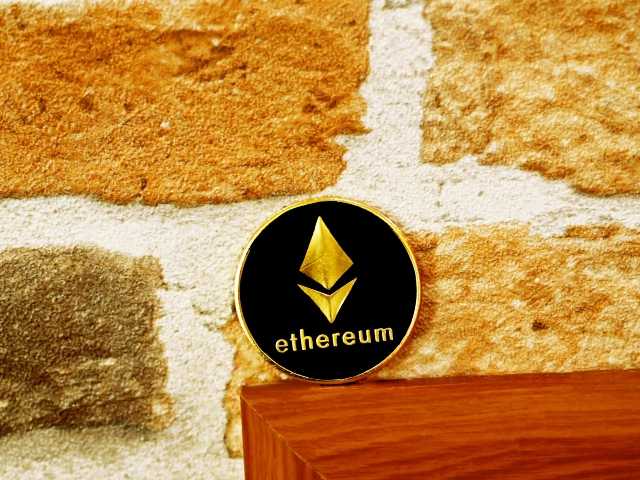
-
Lesser-Known Facts About Ethereum That Might Surprise You
14 Nov 2024 by Heinrich in Vibe
[imagesource:unsplash]
Ethereum is a massive blockchain technology that has revolutionized numerous aspects since its inception in 2015.
From that time, it has become one of the most popular and widely used cryptocurrencies, and because of its unique capabilities, it attracts investors and developers from numerous sectors.
People might know some facts about Ethereum, like the fact that it is the second-largest digital currency by market cap and the most important blockchain platform, that can be bought from crypto exchanges like Binance. However, people might not be aware of other facts. This is why, in this article, we will explore the lesser-known facts about Ethereum. Let’s start.
Ethereum is an open-source platform
Ethereum is open-source, and the network’s programming language, Solidity, encourages users to build applications and continue adding new features to the platform. For example, developers can create dApps or design new digital currencies without experiencing downtime or needing other third parties. Because Ethereum has open-source software, it allows crypto enthusiasts and developers alike to create smart applications.
Ethereum was developed with the help of crowd-funding
Vitalik Buterin, one of the co-founders of Ethereum, thought about the idea of Ethereum back in 2013, but unfortunately, he didn’t have all the resources that would let him make his dream a reality. As he didn’t want to raise the initial funds from centralized sources, he turned to crowd-funding to access the capital needed to launch Ethereum. His idea was a successful one, as his project raised all the required funds in the period between July and August 2014. After he had the needed capital, he launched the platform on 30 July 2015.
Ethereum is more than a digital currency
Many times, Ethereum is considered to be just another cryptocurrency people can opt for to diversify their portfolios. But this isn’t the truth, as Ethereum is one of the most important programming tools and crypto platforms that brought plenty of advantages and features, including dApps, NFTs, or smart contracts. This is the reason why the blockchain of Ethereum is used for more purposes than just powering its native token, as it has also proved to be the perfect platform for businesses from several industries, including healthcare, supply chain, travel and many others.
Ether is the native token of the blockchain, not Ethereum
Many people don’t really know the difference between Ether and Ethereum and use them interchangeably. Still, they mean two different things: Ether is the native token of the network and the second-largest digital coin by market cap, while Ethereum is the platform that powers the cryptocurrency and other applications.
Ethereum does not have a limited supply, like Bitcoin
Bitcoin is capped at 21 million coins, and after it reaches that amount of coins, new tokens will no longer be minted. But that is not the case with Ethereum, which doesn’t have a limited supply. In Ethereum, you don’t really have that many restrictions, just the fact that you can only mine around 18 million Ether in a year.
Ethereum used a Proof-of-Work consensus algorithm at first
When it was launched at first, Ethereum used a Proof-of-Work consensus mechanism, like Bitcoin, and utilized the mining processes to be able to verify transactions and mine new coins. However, as the Proof-of-Work needed massive computational power, it raised concerns from people from all around the world, who began to worry about the sustainability part. In the PoW, miners need to have good computational power and intensive hardware to be able to solve complex problems in order to benefit from the rewards offered. This is why Ethereum took the needed steps to switch to a Proof-of-Stake model, where people don’t have to go through the challenging process of mining. Instead, they can stake a number of their tokens to be able to validate the transactions.
Ethereum hasn’t always been the second digital currency by market cap
People worldwide know that Bitcoin is the largest digital currency by market cap and that Ethereum takes the second place. However, things have not always been the same. In the past, Litecoin and other altcoins were positioned as number two before Ethereum was launched. Still, nowadays, Ethereum is the most important altcoin that people want to invest in. Some opinions also think that Ethereum can surpass Bitcoin at some point in the future for all the innovations it has brought.
Ethereum can be divided
Since its inception, Ethereum’s price has fluctuated a lot, going through many ups and downs. This means that Ethereum had periods when its value was too expensive, and investors weren’t able to buy it at full price. However, Ethereum can be divided into 18 decimals to encourage everyone to participate in the crypto movement, and its ability to be traded in smaller units encouraged its accessibility, which has made more people interested in it.
Ethereum was forked
Back in 2016, the Ethereum DAO was hacked, and this is why Ethereum needed to be forked. This was considered a controversial move at first, and the ones who didn’t want to join this movement were able to remain on the original chain, known as Ethereum Classic. The main difference between Ethereum Classic and Ethereum is that the first has a fixed supply compared with the unlimited one of Ethereum. Over the years, Ethereum has become more successful and has been adopted by more businesses, compared with the Ethereum Classic.
The bottom line
People worldwide know that Ethereum is the second-largest digital coin by market cap, but they might not know some lesser facts about it. This is why we have created this blog post: to offer a little bit of light on the dynamics of Ethereum. Ether is a great cryptocurrency to invest in if you want to diversify your portfolio, but you should be careful when navigating the crypto space, as volatility is an integral part of the landscape, and the prices can fluctuate hugely in a short amount of time.
Latest News
-
Push To Legalise Euthanasia In South Africa Gains Momentum
[imagesource:flickr] South African courts are about to confront a life-or-death questio...
-
Cape Town Is Being Allowed To Pump As Much Sewage Into The Sea As It Likes
[imagesource:flickr] Cape Town will have more than just Vaalies floating around its bea...
-
Hundreds – Maybe Thousands – Trapped In Abandoned SA Mine Shaft Being Starved Out
[imagesource:aljazeera] There are currently hundreds if not thousands of miners trapped...
-
Sotano’s Smart Segue Into Seafood
[imagesource: Sotano/Facebook] Brendon Crew isn’t new to the restaurant business – ...
-
Move Over, Crocs: Japanese ‘Cushion Slides’ Enter The Ugly Footwear Race
[imagesource: Facebook/Modern Notoriety] Crocs have seamlessly infiltrated ma...
-






























